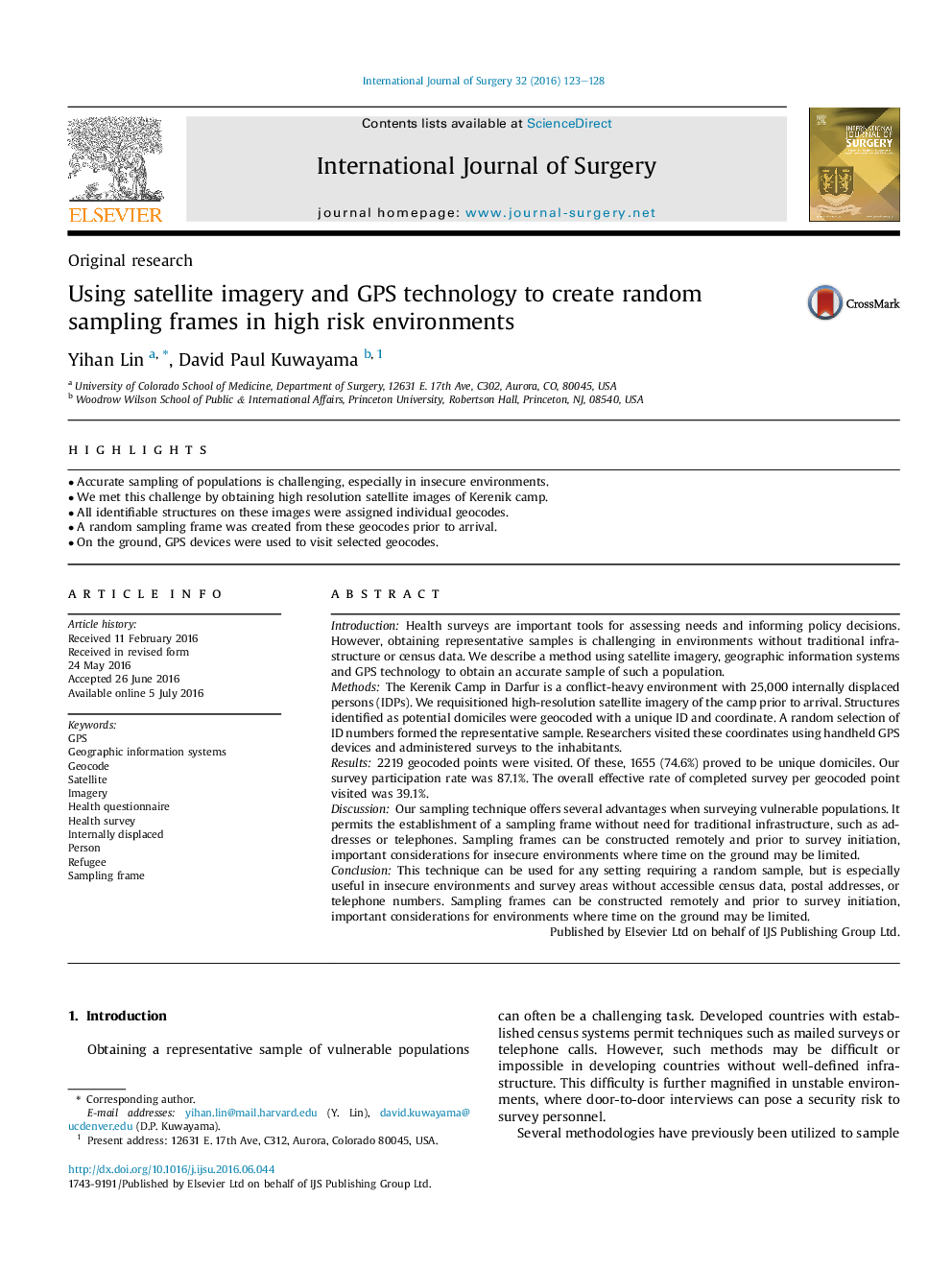| Article ID | Journal | Published Year | Pages | File Type |
|---|---|---|---|---|
| 6250865 | International Journal of Surgery | 2016 | 6 Pages |
â¢Accurate sampling of populations is challenging, especially in insecure environments.â¢We met this challenge by obtaining high resolution satellite images of Kerenik camp.â¢All identifiable structures on these images were assigned individual geocodes.â¢A random sampling frame was created from these geocodes prior to arrival.â¢On the ground, GPS devices were used to visit selected geocodes.
IntroductionHealth surveys are important tools for assessing needs and informing policy decisions. However, obtaining representative samples is challenging in environments without traditional infrastructure or census data. We describe a method using satellite imagery, geographic information systems and GPS technology to obtain an accurate sample of such a population.MethodsThe Kerenik Camp in Darfur is a conflict-heavy environment with 25,000 internally displaced persons (IDPs). We requisitioned high-resolution satellite imagery of the camp prior to arrival. Structures identified as potential domiciles were geocoded with a unique ID and coordinate. A random selection of ID numbers formed the representative sample. Researchers visited these coordinates using handheld GPS devices and administered surveys to the inhabitants.Results2219 geocoded points were visited. Of these, 1655 (74.6%) proved to be unique domiciles. Our survey participation rate was 87.1%. The overall effective rate of completed survey per geocoded point visited was 39.1%.DiscussionOur sampling technique offers several advantages when surveying vulnerable populations. It permits the establishment of a sampling frame without need for traditional infrastructure, such as addresses or telephones. Sampling frames can be constructed remotely and prior to survey initiation, important considerations for insecure environments where time on the ground may be limited.ConclusionThis technique can be used for any setting requiring a random sample, but is especially useful in insecure environments and survey areas without accessible census data, postal addresses, or telephone numbers. Sampling frames can be constructed remotely and prior to survey initiation, important considerations for environments where time on the ground may be limited.
